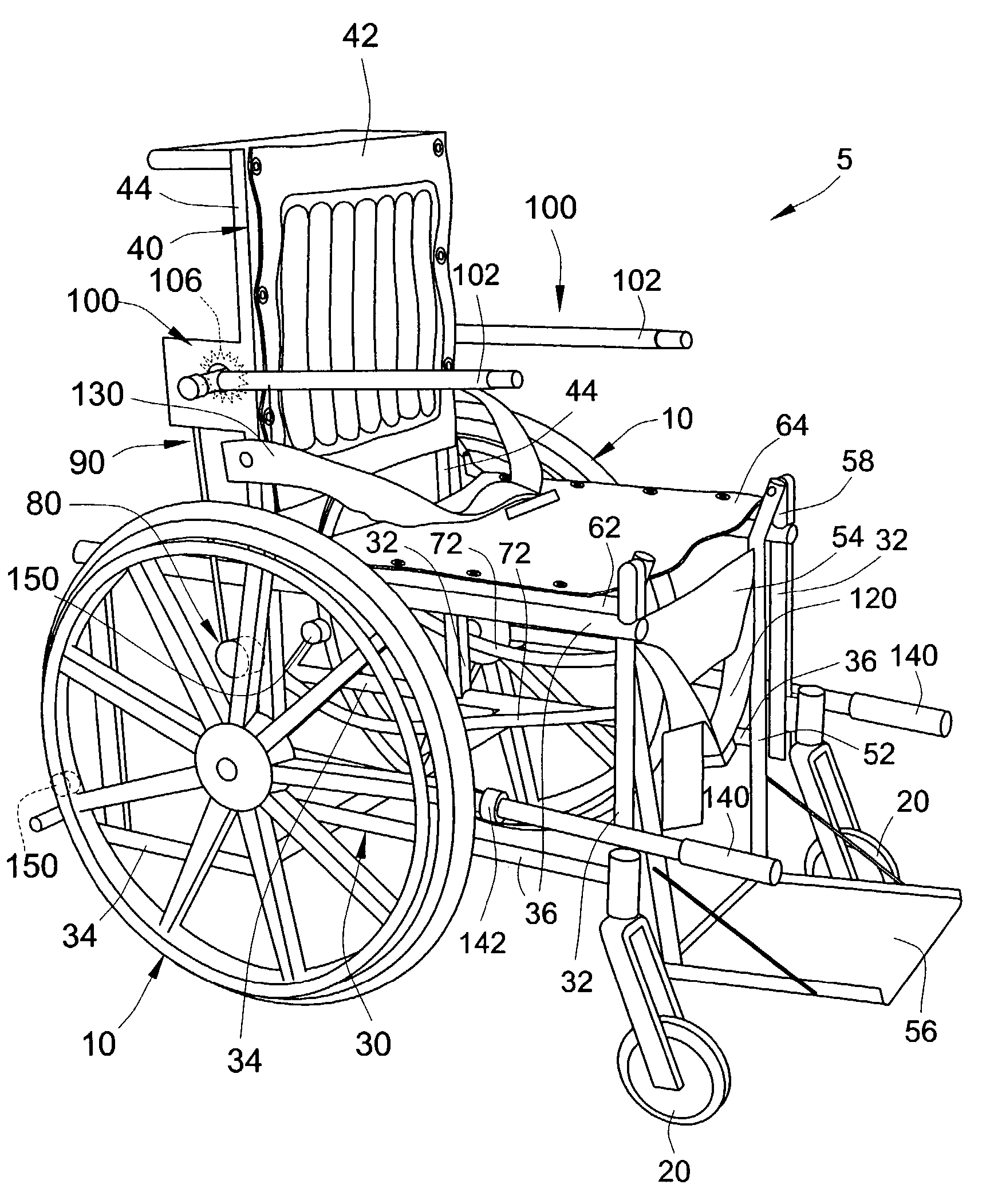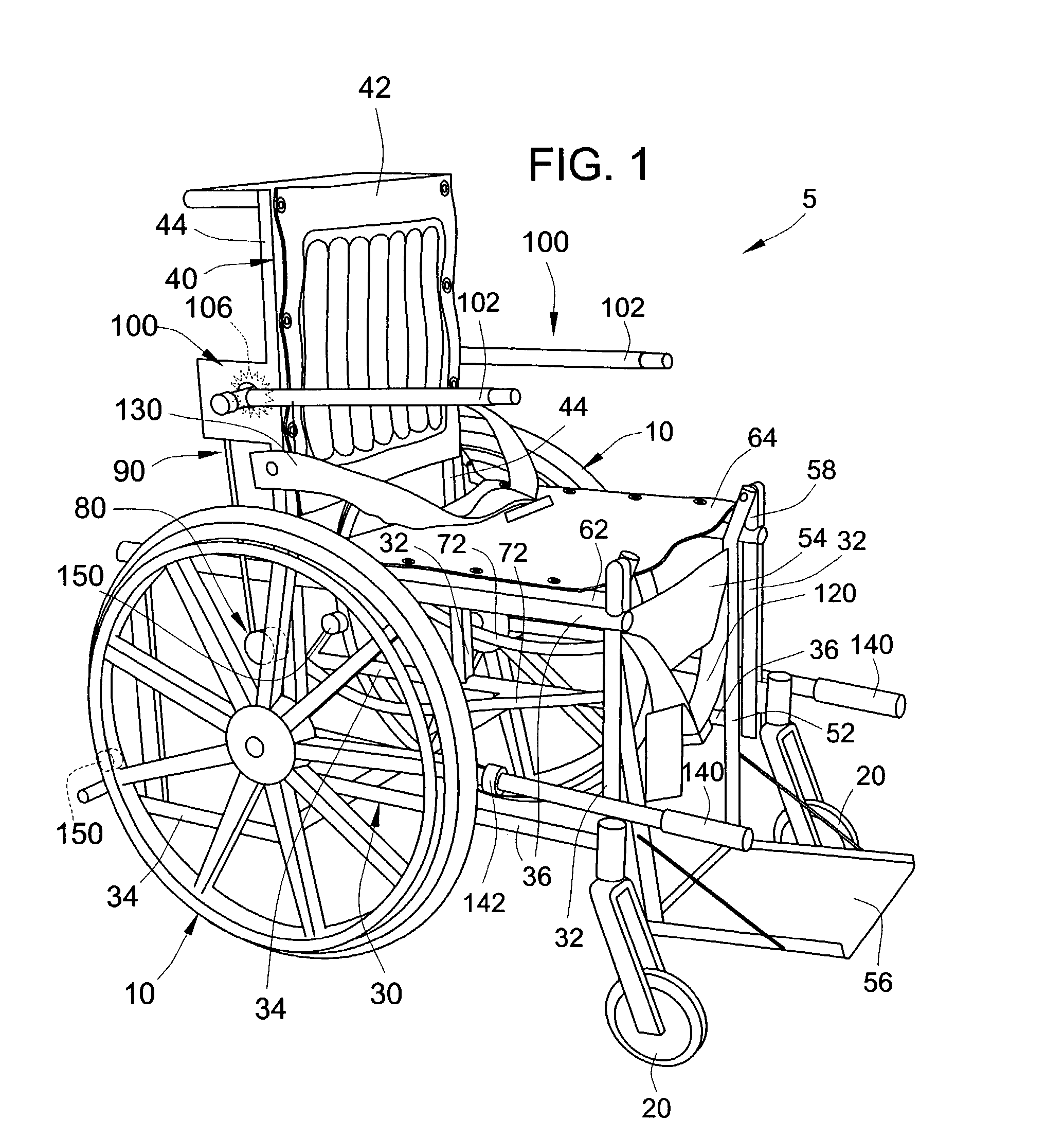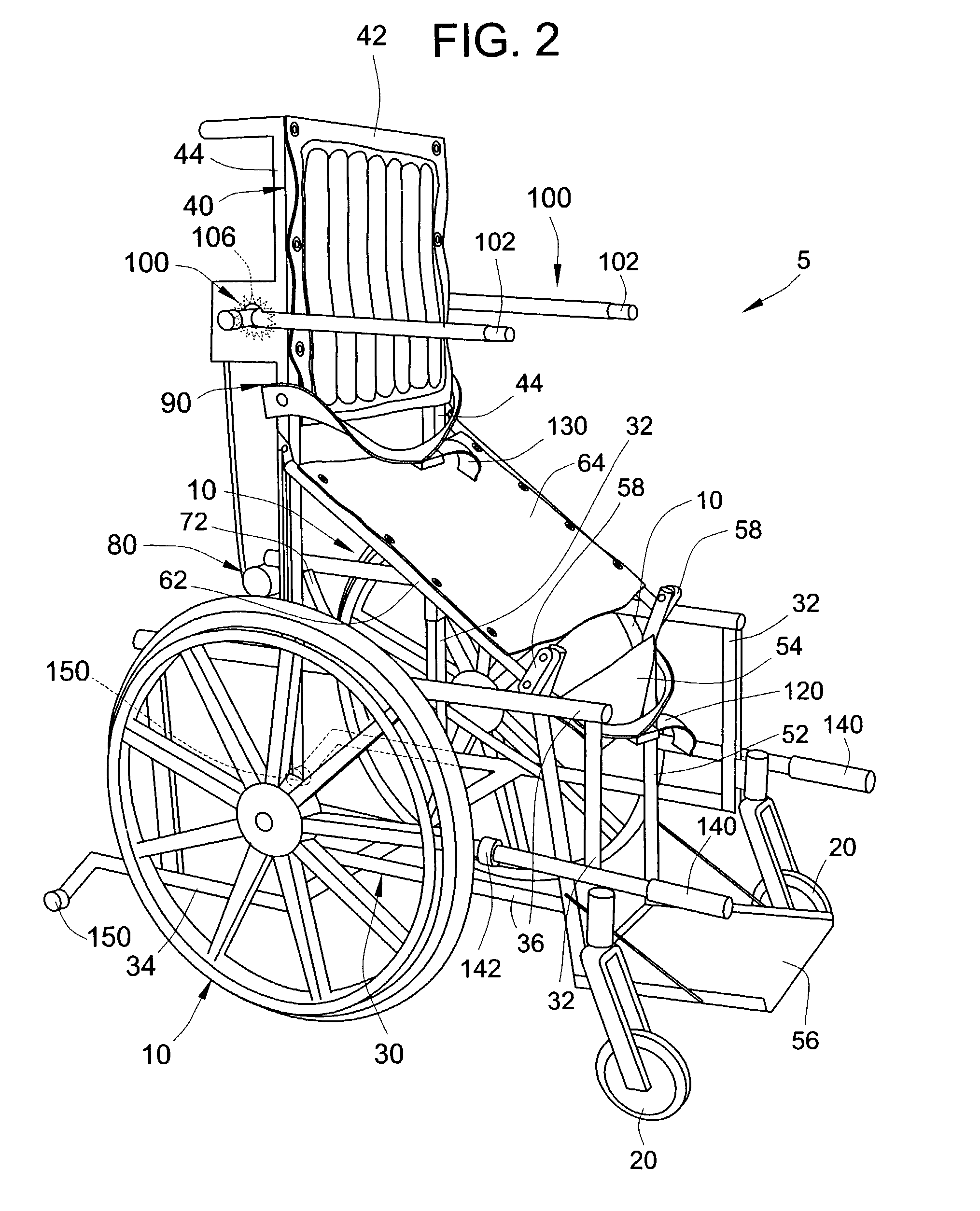Manually operable standing wheelchair
a wheelchair and man-operable technology, applied in the direction of hand carts with one axis, wheelchairs/patient conveyances, transportation and packaging, etc., can solve the problem that the wheelchair may be dangerous for the occupant, and achieve the effect of increasing the wheelbase of the wheelchair, facilitating safe operation of the wheelchair, and ensuring safety
- Summary
- Abstract
- Description
- Claims
- Application Information
AI Technical Summary
Benefits of technology
Problems solved by technology
Method used
Image
Examples
Embodiment Construction
[0037]There are some disabled people who, notwithstanding an incapacity to move their legs while walking, have an ability to support the weight of their upper body with their lower body. The manually operable standing wheelchair of the present invention is a mechanical device that allows an occupant, such as a paraplegic, to move under their own power from a sitting position to standing position. The present invention also allows for the occupant to move the wheelchair around while in the sitting position, the standing position, or in any position in between.
[0038]The embodiment of the manually operable standing wheelchair labeled 5 in the drawings includes a base frame portion 30, chair back portion 40, support linkages 62 and 72, and a plurality of wheels. The base frame portion 30 has vertical tubes 32, horizontal tubes 36, and a pivotal mount 34 for an anti-tip wheel 150. In order to accommodate an occupant, a seat back 42 is mounted to chair back tubes 44, and a seat bottom 64 ...
PUM
 Login to View More
Login to View More Abstract
Description
Claims
Application Information
 Login to View More
Login to View More - R&D
- Intellectual Property
- Life Sciences
- Materials
- Tech Scout
- Unparalleled Data Quality
- Higher Quality Content
- 60% Fewer Hallucinations
Browse by: Latest US Patents, China's latest patents, Technical Efficacy Thesaurus, Application Domain, Technology Topic, Popular Technical Reports.
© 2025 PatSnap. All rights reserved.Legal|Privacy policy|Modern Slavery Act Transparency Statement|Sitemap|About US| Contact US: help@patsnap.com



